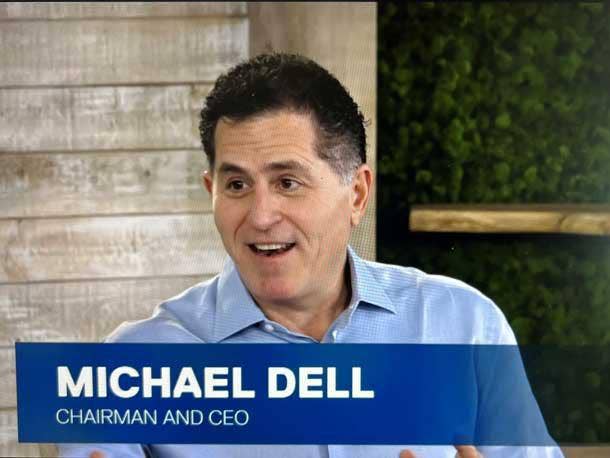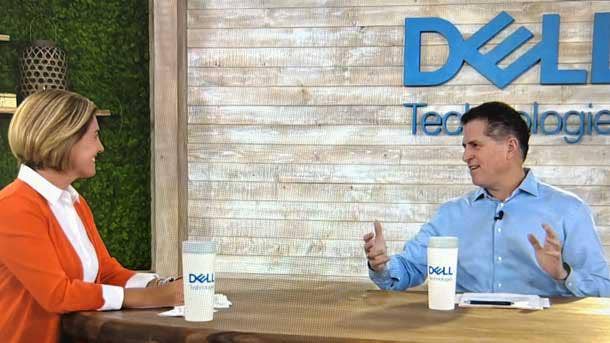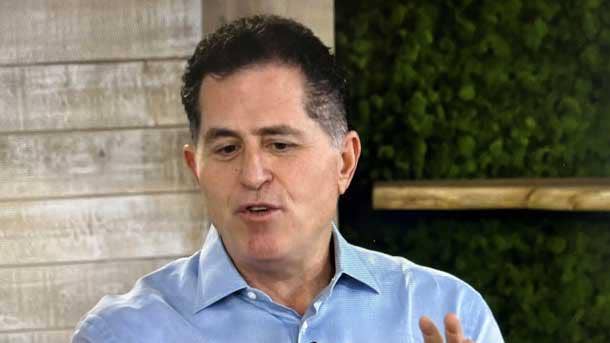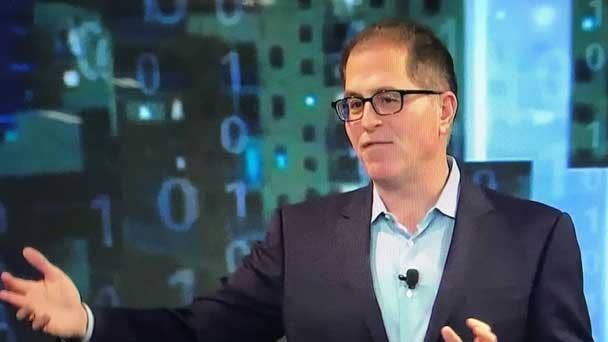Michael Dell: If We Don’t Solve Future Problems, ‘We’ll Be Gone’
‘A business like ours really exists to solve those future problems. If we’re successful in doing that, we’ll be around for the next 37 years and beyond. If we don’t do that, we’ll be gone,’ says Dell Technologies CEO Michael Dell.

Michael Dell’s 5 Bullish Remarks About Dell’s Future And Vision
Besides launching a slew of new edge computing products at the Dell Technologies Summit virtual conference today, CEO Michael Dell dished out the vision for his company in the decades to come.
“Reflecting on our last 37 years—yeah, that’s been really fun and really exciting, but I think it’s all just a pregame show for what’s about to happen in our sector and the role technology plays in enhancing and enabling human potential,” said Michael Dell during his keynote at Dell Technologies Summit today.
Dell Technologies is in the midst of yet another major transformation with its focus on consumption-based IT and as-a-service, edge computing and emerging technologies along with Dell’s upcoming spin-off of virtualization and software superstar VMware next month.
“We have to be bold in our reinvention and our investments for the future,” said Dell. “As I’ve said, a business like ours really exists to solve those future problems. If we’re successful in doing that, we’ll be around for the next 37 years and beyond. If we don’t do that, we’ll be gone. That’s just the way it works. It’s not any more complicated than that.”
CRN breaks down five of Michael Dell’s boldest statements he made today at the Dell Technologies Summit.

Michael Dell’s Vision For Dell Technologies
The financial analysts seem to like [our vision]. Our stock has been performing well. When you look at our business, we have a leading position in some enormous parts of the industry that are just fundamental to how our industry operates. We’re building these multibillion-dollar businesses in new areas like the edge, telco and 5G, etc., but what I find interesting about our opportunity is, if you look around the world—let’s say you’re into AI, or you’re into autonomous transportation, or you’re into the metaverse with blockchain, or AR and VR, etc.—all these things have one thing in common, that is an enormous amount of data.
The amount of data will just keep growing. The time it takes for the amount of data in the world to double keeps shrinking, because everything in the world is becoming intelligent, connected, low latency networks, etc. Certainly, the plot of any organization is to use all of that to create a competitive advantage and create success. That requires new capabilities, new tools and new infrastructure. So we find ourselves in a great position to be able to help at all layers with that challenge.
Reflecting on our last 37 years—yeah, that’s been really fun and really exciting, but I think it’s all just a pregame show for what’s about to happen in our sector and the role technology plays in enhancing and enabling human potential.

Technology Will Play ‘A Big Role’ In Addressing Societal Problems
There has been a lot of progress in the last several decades, and I fundamentally believe technology has been a big fulcrum to [addressing the world’s biggest problems]. Then if you look forward, you say, ‘What are the huge challenges and opportunities, and problems that are facing humans today?’ Technology plays an enormous role here.
So think about de-carbonization. Think about the circular economy. Think about inclusion and diversity. Today, we have over 7.5 billion people in the world—not all of them, either in this country or around the world—are [participating] in this future. That’s an enormous opportunity. Technology will play a big role.
For us, it’s always been how we thought about things. A decade ago, we had our 2020 goals and we’ve been working on these areas for quite some time, and we’ll continue to work on this. Now we have our 2030 goals that are even more ambitious. I think technology is going to play a big role and I’m inspired by the efforts that our teams are putting forward, and also the collective community of customers and partners.
One of the real things that I’ve seen is in the last several years is all these topics have taken on much greater importance to many of us around the world. That’s a great thing, right? More people care about these things and therefore they’re getting attention, energy and investment in dollars to go actually move the needle in a big way.

Dell Backs VMware’s Multi-Cloud Strategy
What I’ve seen and heard from thousands of the biggest companies in the world, is they have understood the benefits of cloud, but they’ve also understood that it’s not one cloud or another—it’s actually multiple clouds that they want to benefit from. It’s not even the public cloud or the private cloud, it’s really both. Also now, there’s the edge. So what customers have come to is this understanding that it’s really a multi-cloud world, and how can you create consistent infrastructure, consistent operations, and access all the best of these cloud services? While also [addressing] the many concerns that companies have.
They want ownership of their data. They don’t want to be locked into a particular type of infrastructure. They’ve also understood that, for each given workload, there’s probably a right place for that workload, and that changes over time depending on performance, cost and security, etc.
So VMware with its Cross-Cloud Services and Dell Technologies creating the easy button for how 600,000 customers can get implement that—that’s been super well received. It’s not the only answer, right? We’re working with many others as well, but multi-cloud is clearly kind of the next phase of cloud. We’re also seeing enormous growth at the edge which only really emphasizes this point about multi-cloud.

Balancing The Short-Term Versus Long-Term
If you try to optimize only for the short term, I don’t think you’d be around very long as a company. At the same time, if you tried to only focus on the long-term, you probably wouldn’t be around either. So you really can and have to do both—it’s how we think about it. Fortunately, I think that’s the way more people are thinking about it and approaching it.
We have to continue to solve the unsolved problems that customers have. We have to really listen and understand what those needs are.
We have to be bold in our reinvention and our investments for the future. As I’ve said, a business like ours, really exists to solve those future problems. If we’re successful in doing that, we’ll be around for the next 37 years and beyond. If we don’t do that, we’ll be gone. That’s just the way it works. It’s not any more complicated than that. We have to have big ears. We have to listen. We have to really be close to our customers and understand what those challenges are. And we have to invest to innovate.

‘We Love The Channel’
Look, our channel partners really all over the world, I say have done a fantastic job during the last 18 or 19 months in delivering the solutions that we’ve created to customers. Our partnership is quite strong. Growth with and through the channel is very strong. [Industry] verticals is an area where partners play an enormous role in reach and access, and understanding, and depth—that‘s great. So there’s tons of value-add.
Obviously, the role of channel companies are changing, just as everything is changing in our world, and we’re evolving with them. So we are having great, great success with our channel partners and great engagement with them. … We love the channel.